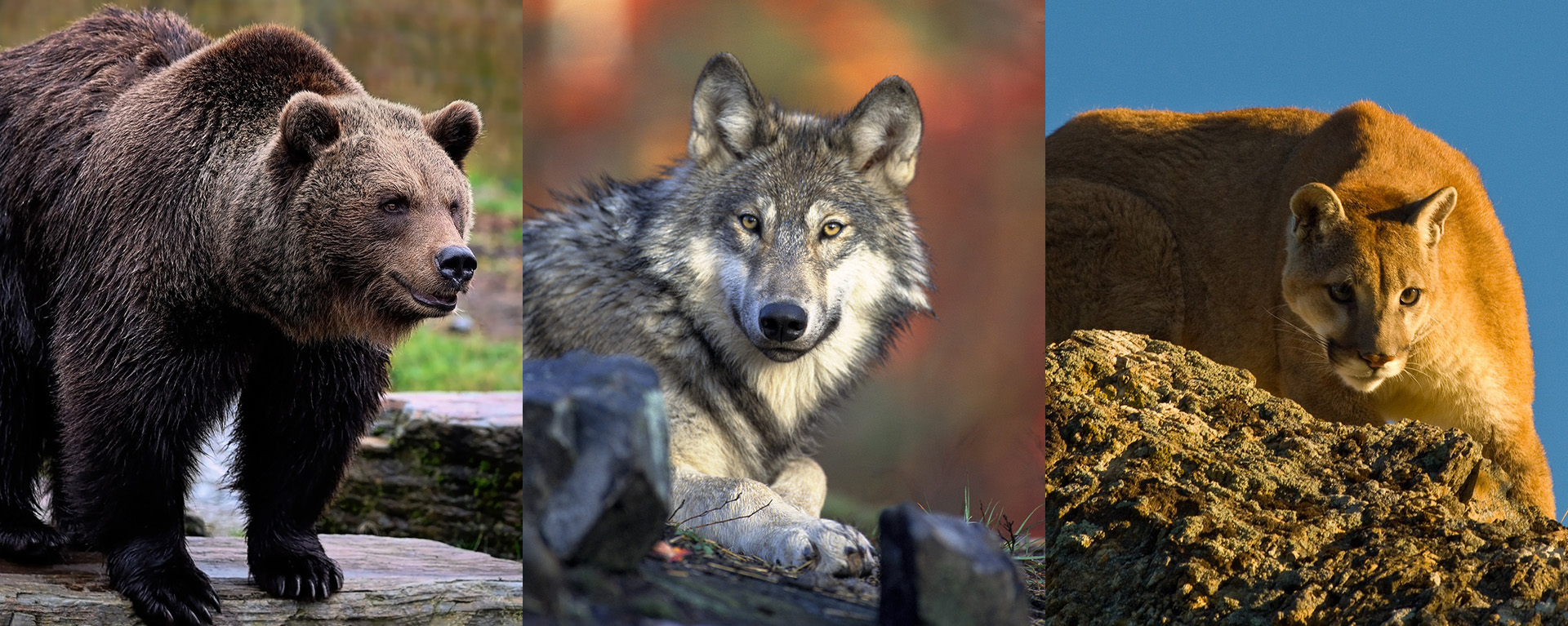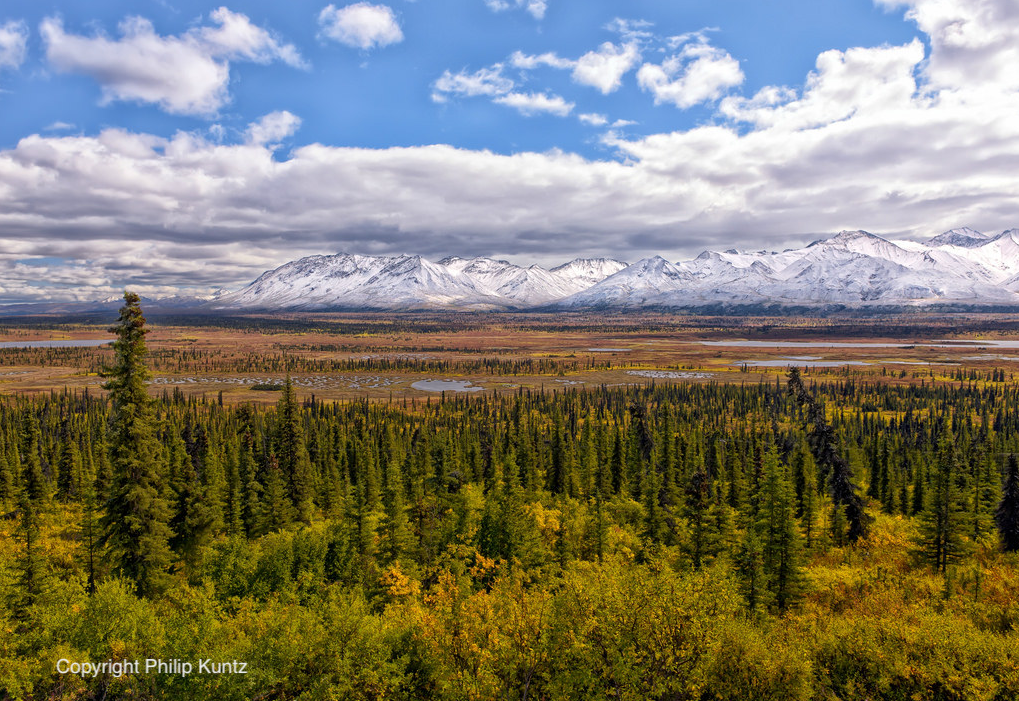Tom Hobbs
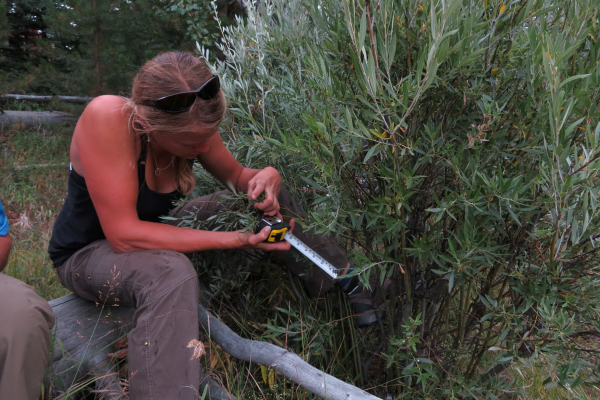
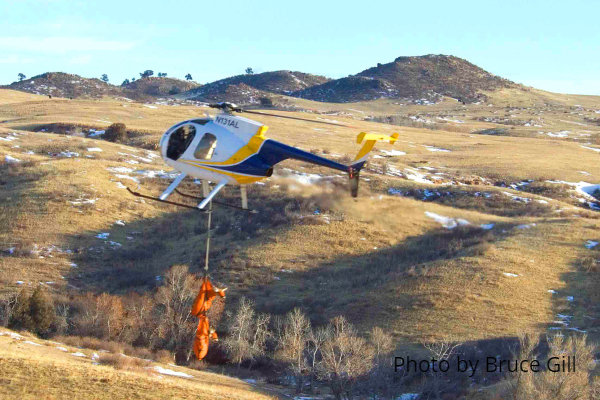
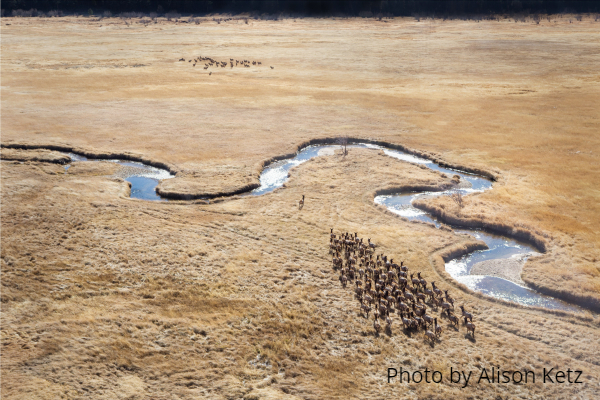
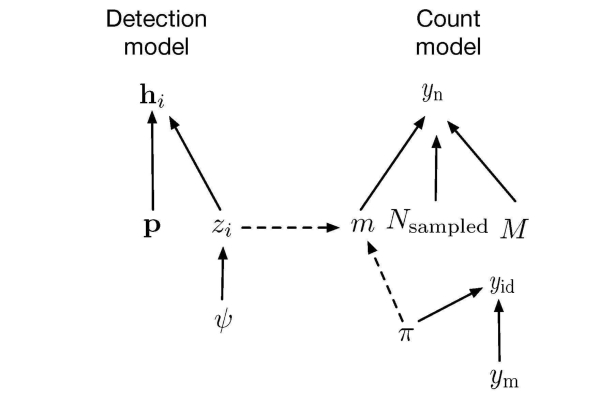
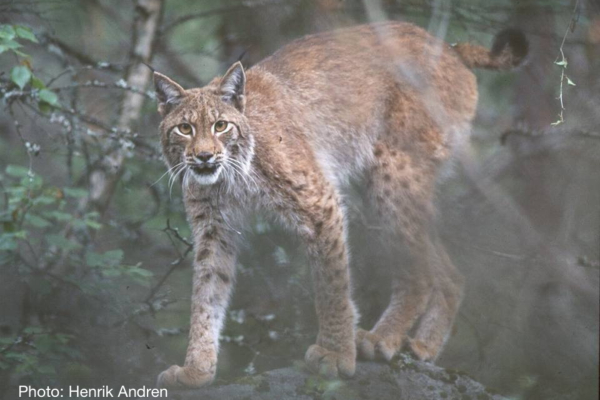
Curriculum Vitae
N. Thompson Hobbs
Natural Resource Ecology Laboratory
Colorado State University
Fort Collins, CO, 80523
nthobbs@nrel.colostate.edu
phone: 970-491-5738
fax: 970-491-1965
Academic Training
Grinnell College Biology B.A. with honors 1974
Colorado State University Wildlife Biology M.S. 1977
Colorado State University Wildlife Biology Ph.D. 1979
Professional Experience
2020- Senior Research Scientist and Professor Emeritus, Natural Resource Ecology Laboratory, Department of Ecosystem Science and Sustainability, and Graduate Degree Program in Ecology, Colorado State University
2007-2020 Senior Research Scientist and Professor, Natural Resource Ecology Laboratory, Department of Ecosystem Science and Sustainability, and Graduate Degree Program in Ecology, Colorado State University
2005-2007 Professor and Head, Department of Forest, Rangeland, and Watershed Stewardship, Colorado State University
1999-2007 Senior Research Scientist, Natural Resource Ecology Laboratory, Colorado State University
1987-1999 Research Scientist, Natural Resource Ecology Laboratory, Colorado State University
1980-2002 Wildlife Researcher, Colorado Division of Wildlife
Selected Awards
Rocky Mountain National Park Resource Stewardship Award, 2017
National Socio-Environmental Synthesis Center Visiting Scientist
Fellowship, 2013-2014
August T. Larsson Guest Researcher Fellowship, Swedish University
of Agricultural Sciences, 2012-2014
Natural Resource Ecology Laboratory Outstanding Graduate Advisor,
2005, 2011
Colorado State University Resident Distinguished Ecologist, 2011
Aldo Leopold Leadership Fellow, 2004
Society of Conservation Biology Distinguished Service Award, 1998
The Wildlife Society Publication Award for the Outstanding
Article in Wildlife Biology and Management, 1992
Grants (2000-present)
Hobbs, N. T, Mevin B. Hooten, and Bailey Fosdick. 2021. Workshop: Intensive, interdisciplinary short courses on Bayesian inference for ecologists. National Science Foundation $413,000, 2021-2024
Hobbs, N. T. OPUS: A general, resource-based explanation for density dependence in mammals. National Science Foundation. $159,000, 2018-2020.
Hobbs, N. T., D. J. Cooper, D. Smith, and G. Spong Long-term research in environmental biology: Understanding controls on state-transition on Yellowstone’s northern range. National Science Foundation $450,000. 2017-2022.
Hobbs, N. T., J. S. Clark, M. B. Hooten, K. Ogle, and M. Uriarte. Building capacity in Bayesian modeling for practicing ecologists. National Science Foundation, $385,000. 2012-2016.
Hobbs, N. T., D. J. Cooper, J. A. Hoeting, M. J. Kauffman, F. Watson, G. Spong, and D. Smith. Long-term research in environmental biology: Understanding controls on state-transition on Yellowstone’s northern range. National Science Foundation $450,000. 2012-2017.
Hobbs, N. T., R. Boone, M. W. Miller, J. A. Hoeting, S. Tavener, and M. Antolin. Bayesian hierarchical modeling of disease dynamics: a case example using chronic wasting disease. National Science Foundation. $2,499,881. 2009-2014.
Hobbs, N. T. and M. W. Miller. WildSense: Instrumenting wildlife to gather contact rate information using delay tolerant wireless sensor networks. National Science Foundation $260,8879. 2009-2013.
Cooper, D. J., N. T. Hobbs, J. A. Hoeting, and D. M. Theobald. Landscape configuration in Yellowstone National Park: an alternative state stabilized by herbivory? National Science Foundation $400,000. 2007-2010.
Hobbs, N. T., J. K. Detling, S. Tavener, and A. Joern. Effects of habitat fragmentation on consumer-resource dynamics in environments varying in space and time. National Science Foundation $250,000. 2005-2008.
Reid, R., N. T. Hobbs, and P. Chapman. Sources of heterogeneity in grasslands: responses of wildlife to people on savanna landscapes. National Science Foundation. $463,544. 2004-2007.
Hobbs, N. T, M. W. Miller and B. A. Wunder. Development of technology for remote monitoring of contact processes in animal populations and communities. Small Grants in Exploratory Research. National Science Foundation. $49,964. 2003-2004.
Hobbs, N. T., R. A. Davis, J. A. Hoeting, and D. S. Schimel. Workshop proposal: New approaches to the statistical analysis of ecological data. National Science Foundation. $65,000. 2003-2004.
Davis, R., J. Hebers, N. T. Hobbs, and R. Miranda. PRIMES: Program for interdisciplinary mathematics, ecology, and statistics. National Science Foundation. $2,167,776. 2002-2007.
Ellis, J. E., N. T. Hobbs, P. K. Thornton, R. Boone, and R. Behnke. Scale and complexity in arid land ecosystems. National Science Foundation $962,920. 2001-2006.
Owen-Smith, N., N. T. Hobbs, and A. W. Illius. Dynamics of large mammalian herbivores in changing environments: alternative modeling approaches. National Center for Ecological Analysis and Synthesis, National Science Foundation 2001-2004.
Singer, F. J., N. T. Hobbs. Field trials with immunocontraceptives to reduce fertility in wild horses on lands administered by the Bureau of Land Management. U.S. Geological Survey and Bureau of Land Management. $250,636. 2001-2007.
Singer, F. J., N. T. Hobbs, and D. Cooper. Willow persistence in Yellowstone National Park. U.S. Geological Survey and U. S. National Park Service. $283,192. 2001-2004.
Recent journal articles (2000-present)
(* indicates a student at Colorado State)
Hobbs, N.T, In press. A general, resource-based explanation of density dependence in populations of large herbivores. Ecological Monographs
N. Thompson Hobbs, Danielle B. Johnston, Kristin N. Marshall, Evan C.Wolf, and David J. Cooper. In press. Does restoring apex predators to food webs restore ecosystems? Large carnivores in Yellowstone as a model system. Ecological Mongraphs
Galloway, N. L., R. J. Monello, D. Brimeyer, E. K. Cole, and N. T. Hobbs. 2021.
Supporting adaptive management with ecological forecasting: chronic wasting disease in the Jackson elk herd. Ecosphere 12, https://doi.org/10.1002/ecs2.3776.
Landau*, V. A., B. R. Noon, D. M. Theobald, N. T. Hobbs, and C. K. Nielsen. 2022. Integrating presence-only and occupancy data to model habitat use for the northernmost population of jaguars. Ecological Applications 32.
Parker*, J. M., J. L. Brown, N. T. Hobbs, N. P. Boisseau, D. Letitiya, I. Douglas-Hamilton, and G. Wittemyer. 2022. Social support correlates with glucocorticoid concentrations in wild African elephant orphans. Communications Biology 5.
Searle, K. R., A. Butler, J. J. Waggitt, P. G. H. Evans, M. I. Bogdanova, N. T. Hobbs, F. Daunt, and S. Wanless. 2022.Opposing effects of spatiotemporal variation in resources and temporal variation in climate on density dependent population growth in seabirds. Journal of Animal Ecology.
Zachmann, L. J., E. M. Borgman, D. L. Witwicki, M. C. Swan, C. McIntyre, and N.
T. Hobbs. Bayesian Models for Analysis of Inventory and Monitoring Data with
Non-ignorable Missingness. Journal of Agricultural Biological and Environmental
Statistics.
Andren, H., N. T. Hobbs, M. Aronsson, H. Broseth, G. Chapron, J. D. C. Linnell, J.
Odden, J. Persson, and E. B. Nilsen. 2020. Harvest models of small populations of a large carnivore using Bayesian forecasting. Ecological Applications 30:e02063.
Ruprecht, J. S., D. N. Koons, K. Hersey, N. T. Hobbs, and D. R. MacNulty. 2020. The
effect of climate on population growth in a cold-adapted ungulate at its equatorial
range limit. Ecosphere https://doi.org/10.1002/ecs2.3058.
Ketz*, A. C., T. L. Johnson, M.. B. Hooten, and N. T. Hobbs. 2019. A hierarchical Bayesian approach for handling missing classification data. Ecology and Evolution, 9:3130-3140.
Ketz*, A. C T. L. Johnson, R. J. Monello, J. Mack, J. George, B. Kraft, M. A. Wild, M. B. Hooten, and N. T. Hobbs. 2018. Estimating abundance of an open population with mark-recapture using auxiliary data on animal movements. Ecological Applications, 28:816–825, 2018.
Ketz*, A. C., T. L. Johnson, R. J. Monello, and N. T. Hobbs. 2016. Informing management with monitoring data: the value of Bayesian forecasting. Ecosphere 7:e01587-n/a.
Ahn, J., A. Mysore, K. Zybko, C. Krumm, S. Thokala, X. Xing, M. Lian, R. Han, S. Mishra, and N. T. Hobbs. 2016. WildSense: Monitoring interactions among wild deer in harsh outdoor environments using a delay-tolerant WSN. Journal of Sensors 2016:17.
Campbell*, E. E., W. J. Parton, J. L. Soong, K. Paustian, N. T. Hobbs, and M. F. Cotrufo. 2016. Using litter chemistry controls on microbial processes to partition litter carbon fluxes with the Litter Decomposition and Leaching (LIDEL) model. Soil Biology & Biochemistry 100:160-174.
Geremia*, C., M. W. Miller, J. A. Hoeting, M. F. Antolin, and N. T. Hobbs. 2015. Bayesian Modeling of Prion Disease Dynamics in Mule Deer Using Population Monitoring and Capture-Recapture Data. PLoS ONE 10:20.
Geremia*, C. A. J. A. Hoteing Jennifer, L. Wolfe, N. Galloway M. Antolin, T. Spraker, M. W. Miller and N. T. Hobbs. 2015. Age and repeated biopsy influence antemortem prpcwd testing in mule deer (Odocoileus hemionus) in Colorado, USA. Journal of Wildlife Diseases 51:801-810.
Hooten, M. B. and N. T. Hobbs. 2015. A guide to Bayesian model selection for ecologists. Ecological Monographs, 85: 3-28. (ISI Highly Cited Paper)
Hobbs, N. T., C. Geremia*, J. Treanor, R. Wallen, P. J. White, M. B. Hooten, and J. C. Rhyan. 2015 State-space modeling to support management of brucellosis in the Yellowstone bison population. Ecological Monographs. 85:525-556
Searle, K. R., M. B. Rice, C. R. Anderson, C. Bishop, and N. T. Hobbs. 2015. Asynchronous vegetation phenology enhances winter body condition of a large mobile herbivore. Oecologia 179:377-391.
Raiho*, A. M, M. B. Hooten, S. Bates and N. T. Hobbs. 2015. Forecasting the effects of fertility control on overabundant ungulates: white-tailed deer in the National Capital Region. PLoS ONE. 10(12): e0143122. doi:10.1371/journal.pone.0143122
Geremia*, C., P. J. White, J. A. Hoeting, R. L. Wallen, F. G. R. Watson, D. Blanton, and N. T. Hobbs. 2014. Integrating population- and individual-level information in a movement model of Yellowstone bison. Ecological Applications 24:346-362.
Marshall*, K. N., D. J. Cooper, and N. T. Hobbs. 2014. Interactions among herbivory, climate, topography and plant age shape riparian willow dynamics in northern Yellowstone National Park, USA. Journal of Ecology 102:667-677.
Monello, R. J., J. G. Powers, N. T. Hobbs, T. R. Spraker, M. K. Watry, and M. A. Wild. 2014. Survival and population growth of a free ranging elk population with a long history of exposure to chronic wasting disease. Journal of Wildlife Management 78:214-223.
Ogutu, J. O., R. S. Reid, H. P. Piepho, N. T. Hobbs, M. E. Rainy, R. L. Kruska, J. S. Worden, and M. Nyabenge. 2014. Large herbivore responses to surface water and land use in an East African savanna: implications for conservation and human-wildlife conflicts. Biodiversity and Conservation 23:573-596.
Ransom*, J. I., J. G. Powers, N. T. Hobbs, and D. L. Baker. 2014. Ecological feedbacks can reduce population-level efficacy of wildlife fertility control. Journal of Applied Ecology 51:259-269.
Reynolds*, L. V., D. J. Cooper, and N. T. Hobbs. 2014. Drivers of riparian tree invasion on a desert stream. River Research and Applications 30:60-70.
Marshall*, K. N., N. T. Hobbs, and D. J. Cooper. 2013. Stream hydrology limits recovery of riparian ecosystems after wolf reintroduction. Proceedings of the Royal Society B-Biological Sciences 20122977. http://dx.doi.org/10.1098/rspb.2012.2977.
Ransom*, J. I., N. T. Hobbs, and J. Bruemmer. 2013. Contraception can lead to trophic asynchrony between birth pulse and resources. PLoS ONE 8. Article Number: e54972.
Monello, R. J., J. G. Powers, N. T. Hobbs, T. R. Spraker, K. I. O’Rourke, and M. A. Wild. 2013. Efficacy of antemortem rectal biopsies to diagnose and estimate prevalence of chronic wasting disease in free-ranging cow elk (Cervus elaphus nelsoni). Journal of Wildlife Diseases 49:270-278.
Wang, G., N. T. Hobbs, N. A. Slade, J. F. Merritt, L. L. Getz, M. Hunter, S. H. Vessey, J. Witham, and A. Guillaumet. 2013. Comparative population dynamics of large and small mammals in the Northern Hemisphere: deterministic and stochastic forces. Ecography 36:439-446.
Davis, M. J., S. Thokala, X. Y. Xing, N. T. Hobbs, M. W. Miller, R. Han, and S. Mishra. 2013. Testing the Functionality and Contact error of a GPS-based wildlife tracking network. Wildlife Society Bulletin 37:855-861.
Herbener, K. W., S. J. Tavener, and N. T. Hobbs. 2012. The distinct effects of habitat fragmentation on population size. Theoretical Ecology 5:73-82.
Bhola, N., J. O. Ogutu, H. P. Piepho, M. Y. Said, R. S. Reid, N. T. Hobbs, and H. Olff. 2012. Comparative changes in density and demography of large herbivores in the Masai Mara Reserve and its surrounding human-dominated pastoral ranches in Kenya. Biodiversity and Conservation 21:1509-1530.
Hobbs, N. T., H. Andren, J. Persson, M. Aronsson, and G. Chapron. 2012. Native predators reduce harvest of reindeer by Sámi pastoralists. Ecological Applications 22:1640-1654.
Liberg, O., G. Chapron, P. Wabakken, H. C. Pedersen, N. T. Hobbs, and H. Sand. 2012. Shoot, shovel and shut up: cryptic poaching slows restoration of a large carnivore in Europe. Proceedings of the Royal Society B-Biological Sciences 279:910-915.
Wang, G. M., N. T. Hobbs, N. A. Slade, J. F. Merritt, L. L. Getz, M. Hunter, S. H. Vessey, J. Witham, and A. Guillaumet. 2011. Comparative population dynamics of large and small mammals in the Northern Hemisphere: deterministic and stochastic forces. Ecography doi:10.1111/j.1600-0587.2011.07156.x.
Johnston, D. B., D. J. Cooper, and N. T. Hobbs. 2011. Relationships between groundwater use, water table, and recovery of willow on Yellowstone’s northern range. Ecosphere 2:art20.
LaDeau, S. L., G. E. Glass, N. T. Hobbs, A. Latimer, and R. S. Ostfeld. 2011. Data-model fusion to better understand emerging pathogens and improve infectious disease forecasting. Ecological Applications 21:1443-1460.
Hobbs, N. T., and K. Ogle. 2011. Introducing data-model assimilation to students of ecology. Ecological Applications 21:1537-1545.
Blackburn, H. B., N. T. Hobbs, and J. K. Detling. 2011. Nonlinear responses to food availability shape effects of habitat fragmentation on consumers. Ecology 92:98-107.
Wild, M. A., N. T. Hobbs, M. S. Graham, and M. W. Miller. 2011. The role of predation in disease control: a comparison of selective and nonselective removal on prion disease dynamics in deer. Journal of Wildlife Diseases 47:78-93.
Searle, K. R., N. T. Hobbs, and S. T. Jaronski. 2010. Asynchrony, fragmentation, and scale determine benefits of landscape heterogeneity to mobile herbivores. Oecologia 163:815-824.
Ransom, J. I., B. S. Cade, and N. T. Hobbs. 2010. Influences of immunocontraception on time budgets, social behavior, and body condition in feral horses. Applied Animal Behaviour Science 124:51-60.
Ogutu, J. O., H. P. Piepho, R. S. Reid, M. E. Rainy, R. L. Kruska, J. S. Worden, M. Nyabenge, and N. T. Hobbs. 2010. Large herbivore responses to water and settlements in savannas. Ecological Monographs 80:241-266.
Krumm, C. E., M. M. Conner, N. T. Hobbs, D. O. Hunter, and M. W. Miller. 2010. Mountain lions prey selectively on prion-infected mule deer. Biology Letters 6:209-211.
Dulberger, J., N. T. Hobbs, H. M. Swanson, C. J. Bishop, and M. W. Miller. 2010. Estimating chronic wasting disease effects on mule deer recruitment and population growth. Journal of Wildlife Diseases 46:1086-1095.
Wang, G. M., N. T. Hobbs, S. Twombly, R. Boone, A. Illius, I. Gordon, and J. Gross. 2009. Density dependence in northern ungulates: interactions with predation and resources. Population Ecology 51:123-132.
Hobbs, N. T., K. A. Galvin, C. J. Stokes, J. M. Lackett, A. J. Ash, R. B. Boone, R. S. Reid, and P. K. Thornton. 2008. Fragmentation of rangelands: Implications for humans, animals, and landscapes. Global Environmental Change-Human and Policy Dimensions 18:776-785.
Bilyeu, D. M., D. J. Cooper, and N. T. Hobbs. 2008. Water tables constrain height recovery of willow on Yellowstone’s northern range. Ecological Applications 18:80-92.
Bradford, J. B. and N. T. Hobbs. 2008. Regulating overabundant ungulate populations: An example for elk in Rocky Mountain National Park, Colorado. Journal of Environmental Management 86:520-528.
Wolf, E. C., D. J. Cooper, and N. T. Hobbs. 2007. Hydrologic regime and herbivory stabilize an alternative state in Yellowstone National Park. Ecological Applications 17:1572-1587.
Twombly, S., G. M. Wang, and N. T. Hobbs. 2007. Composite forces shape population dynamics of copepod crustaceans. Ecology 88:658-670.
Searle, K. R., N. T. Hobbs, and I. J. Gordon. 2007. It’s the “foodscape”, not the landscape: Using foraging behavior to make functional assessments of landscape condition. Israel Journal of Ecology & Evolution 53:297-316.
Manier, D. J. and N. T. Hobbs. 2007. Large herbivores in sagebrush steppe ecosystems: livestock and wild ungulates influence structure and function. Oecologia 152:739-750.
Johnston, D. B., D. J. Cooper, and N. T. Hobbs. 2007. Elk browsing increases aboveground growth of water-stressed willows by modifying plant architecture. Oecologia 154:467-478.
Bilyeu, D. M., D. J. Cooper, and N. T. Hobbs. 2007. Assessing impacts of large herbivores on shrubs: tests of scaling factors for utilization rates from shoot-level measurements. Journal of Applied Ecology 44:168-175.
Wang, G. M., N. T. Hobbs, R. B. Boone, A. W. Illius, I. J. Gordon, J. E. Gross, and K. L. Hamlin. 2006. Spatial and temporal variability modify density dependence in populations of large herbivores. Ecology 87:95-102.
Searle, K. R., T. Vandervelde, N. T. Hobbs, L. A. Shipley, and B. A. Wunder. 2006. Spatial context influences patch residence time in foraging hierarchies. Oecologia 148:710-719.
Searle, K. R., N. T. Hobbs, B. A. Wunder, and L. A. Shipley. 2006. Preference in patchy landscapes: the influence of scale-specific intake rates and variance in reward. Behavioral Ecology 17:315-323.
Miller, M. W., N. T. Hobbs, and S. J. Tavener. 2006. Dynamics of prion disease transmission in mule deer. Ecological Applications 16:2208-2214.
Manier, D. J. and N. T. Hobbs. 2006. Large herbivores influence the composition and diversity of shrub-steppe communities in the Rocky Mountains, USA. Oecologia 146:641-651.
Hobbs, N. T. and R. Hilborn. 2006. Alternatives to statistical hypothesis testing in ecology: A guide to self teaching. Ecological Applications 16:5-19.
Hall, S. A., I. C. Burke, and N. T. Hobbs. 2006. Litter and dead wood dynamics in ponderosa pine forests along a 160-year chronosequence. Ecological Applications 16:2344-2355.
Farnsworth, M. L., J. A. Hoeting, N. T. Hobbs, and M. W. Miller. 2006. Linking chronic wasting disease to mule deer movement scales: A hierarchical Bayesian approach. Ecological Applications 16:1026-1036.
Cooper, D. J., J. Dickens, N. T. Hobbs, L. Christensen, and L. Landrum. 2006. Hydrologic, geomorphic and climatic processes controlling willow establishment in a montane ecosystem. Hydrological Processes 20:1845-1864.
Theobald, D. M., T. Spies, J. Kline, B. Maxwell, N. T. Hobbs, and V. H. Dale. 2005. Ecological support for rural land-use planning. Ecological Applications 15:1906-1914.
Searle, K. R., T. Vandervelde, N. T. Hobbs, and L. A. Shipley. 2005. Gain functions for large herbivores: tests of alternative models. Journal of Animal Ecology 74:181-189.
Searle, K. R., N. T. Hobbs, and L. A. Shipley. 2005. Should I stay or should I go? Patch departure decisions by herbivores at multiple scales. Oikos 111:417-424.
Manier, D. J., N. T. Hobbs, D. M. Theobald, R. M. Reich, M. A. Kalkhan, and M. R. Campbell. 2005. Canopy dynamics and human caused disturbance on a semi-arid landscape in the Rocky Mountains, USA. Landscape Ecology 20:1-17.
Hobbs, N. T. and K. R. Searle. 2005. A reanalysis of the body mass scaling of trampling by large herbivores. Oecologia 145:462-464.
Farnsworth, M. L., L. L. Wolfe, N. T. Hobbs, K. P. Burnham, E. S. Williams, D. M. Theobald, M. M. Conner, and M. W. Miller. 2005. Human land use influences chronic wasting disease prevalence in mule deer. Ecological Applications 15:119-126.
Miller, M. W., E. S. Williams, N. T. Hobbs, and L. L. Wolfe. 2004. Environmental sources of prion transmission in mule deer. Emerging Infectious Diseases 10:1003-1006.
Miller, J. R., J. A. Wiens, N. T. Hobbs, and D. M. Theobald. 2003. Effects of human settlement on bird communities in lowland riparian areas of Colorado (USA). Ecological Applications 13:1041-1059.
Hobbs, N. T., J. E. Gross, L. A. Shipley, D. E. Spalinger, and B. A. Wunder. 2003. Herbivore functional response in heterogeneous environments: A contest among models. Ecology 84:666-681.
Hobbs, N. T. 2003. Challenges and opportunities in integrating ecological knowledge across scales. Forest Ecology and Management 181:223-238.
Wolfe, L. L., M. M. Conner, T. H. Baker, V. J. Dreitz, K. P. Burnham, E. S. Williams, N. T. Hobbs, and M. W. Miller. 2002. Evaluation of antemortem sampling to estimate chronic wasting disease prevalence in free-ranging mule deer. Journal of Wildlife Management 66:564-573.
Weisberg, P. J., N. T. Hobbs, J. E. Ellis, and M. B. Coughenour. 2002. An ecosystem approach to population management of ungulates. Journal of Environmental Management 65:181-197.
Wang, G. M., N. T. Hobbs, F. J. Singer, D. S. Ojima, and B. C. Lubow. 2002. Impacts of climate change on elk population dynamics in Rocky Mountain National Park, Colorado, USA. Climatic Change 54:205-223.
Wang, G. M., N. T. Hobbs, K. M. Giesen, H. Galbraith, D. S. Ojima, and C. E. Braun. 2002. Relationships between climate and population dynamics of white-tailed ptarmigan Lagopus leucurus in Rocky Mountain National Park, Colorado, USA. Climate Research 23:81-87.
Wang, G. M., N. T. Hobbs, H. Galbraith, and K. M. Giesen. 2002. Signatures of large-scale and local climates on the demography of white-tailed ptarmigan in Rocky Mountain National Park, Colorado, USA. International Journal of biometeorology 46:197-201.
Theobald, D. M., and N. T. Hobbs. 2002. A framework for evaluating land use planning alternatives: Protecting biodiversity on private land. Conservation Ecology 6.
Theobald, D. M., N. T. Hobbs, T. Bearly, J. A. Zack, T. Shenk, and W. E. Riebsame. 2000. Incorporating biological information in local land-use decision making: designing a system for conservation planning. Landscape Ecology 15:35-45.
Miller, J. R., and N. T. Hobbs. 2000. Recreational trails, human activity, and nest predation in lowland riparian areas. Landscape and Urban Planning 50:227-236.
Hobbs, N. T., D. C. Bowden, and D. L. Baker. 2000. Effects of fertility control on populations of ungulates: General, stage-structured models. Journal of Wildlife Management 64:473-491.
Dale, V. H., S. Brown, R. A. Haeuber, N. T. Hobbs, N. Huntly, R. J. Naiman, W. E. Riebsame, M. G. Turner, and T. J. Valone. 2000. Ecological principles and guidelines for managing the use of land. Ecological Applications 10:639-670.
Books
Hobbs, N. T., and M. B. Hooten. 2015. Bayesian models: A statistical primer for
ecologists. Princeton University Press. Winner of the Outstanding Publication of the
Year Award 2015, Colorado State University, Warner College of Natural Resources.
Galvin, K. A., R. S. Reid, R. H. Behnke, and N. T. Hobbs eds. 2008. Fragmentation
in semi-arid and arid landscapes: consequences for human and natural systems.
Springer.
Impact
Web of Science career citations: 8,363
Web of Science h-index: 50
Most cited paper: Hobbs, N. T. 1996. Modification of ecosystems by ungulates. Journal of Wildlife Management 60:695-713. Cited 709 times.
Service (2000-present)
Panelist, Coupled Human and Natural Systems Advisory Panel, National Science Foundation, 2017
Panelist, National Institute of Health Advisory Panel, Models of
Infectious Disease Agent Study, 2014
Panelist, National Science Foundation Advisory Panel, Population
and Community Ecology Program, 2012, 2013, 2016
Panelist, National Oceanic and Atmospheric Administration Science
Review Panel, Impacts of salmon abundance on northwest killer
whale populations, 2011-2012
Panelist, National Science Foundation Advisory Panel, National
Ecological Observatory Network Operations and Maintenance Site
Review, 2012
Tenure and promotion review, Columbia University, 2011
Panelist, National Science Foundation Advisory Panel, Ecosystem
Science Program, 2009
Program Director, National Science Foundation Population and
Community Ecology Program, 2008-2009
Panelist, National Science Foundation Advisory Panel, Ecology
Program, 2000-2006
Member, Greater Yellowstone Science Agenda Working Group, 2009
International Opponent, Department of Ecology, Swedish University
of Agricultural Sciences, 2007
Member, Yellowstone National Park Wildlife Health Planning Group,
2007
Member, National Science Foundation Site Review Team, Hubbard
Brook Long Term Ecological Research Project, 2007
Leader, Tiger Team, National Ecological Observatory Network Data
Products for Fundamental Sentinel Units, 2007
Panelist, U. S. Department of Agriculture National Wildlife
Research Center Promotion Evaluation Panel, 2005
Reviewer, National Ecological Observatory Network Integrated
Science and Education Plan, 2005
Member, American Institute of Biological Sciences Workshop,
Ecology of Infectious Diseases, National Ecological Observatory
Network, 2004
Member, National Park Service Rocky Mountain Monitoring Network
Science Panel, 2004
Member, National Science Foundation National Ecological
Observatory Network Consortium Site Review Team, 2004
Panelist, National Science Foundation National Ecological
Observatory Network Consortium Advisory Panel, 2004
Panelist, David Smith Fellowship Advisory Panel, The Nature
Conservancy, 2004
International Opponent, Department of Animal Ecology, Swedish
University of Agricultural Sciences, 2003
Academic Mentor, David Smith Fellowship, The Nature Conservancy,
2000-2002
Panelist, National Science Foundation Advisory Panel,
Professional Opportunities for Women in Research, 2000
Editorial boards
Ecological Applications, 2002-present
Journal of Wildlife Management, 1995-1997
Journal of Range Management, 1985-1989


